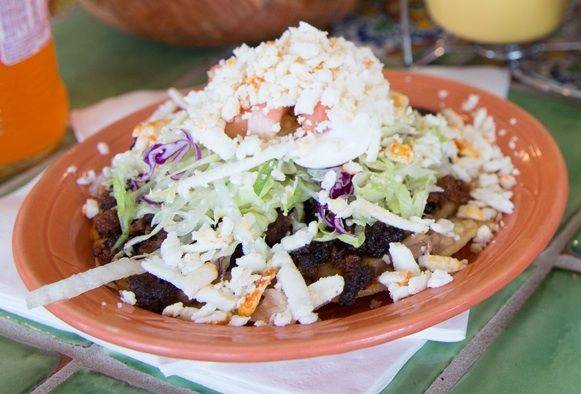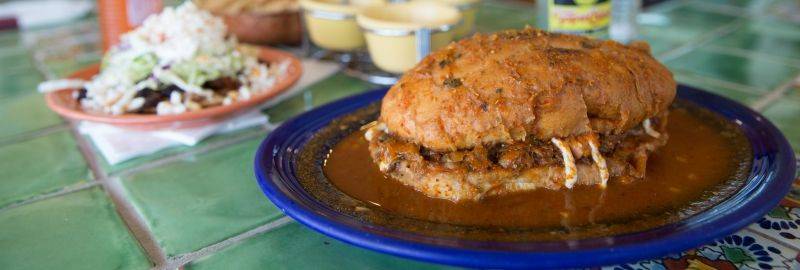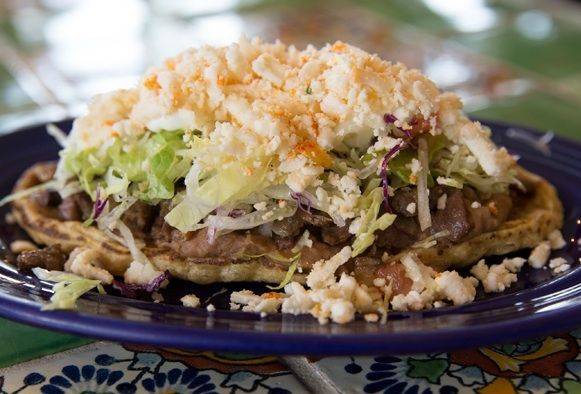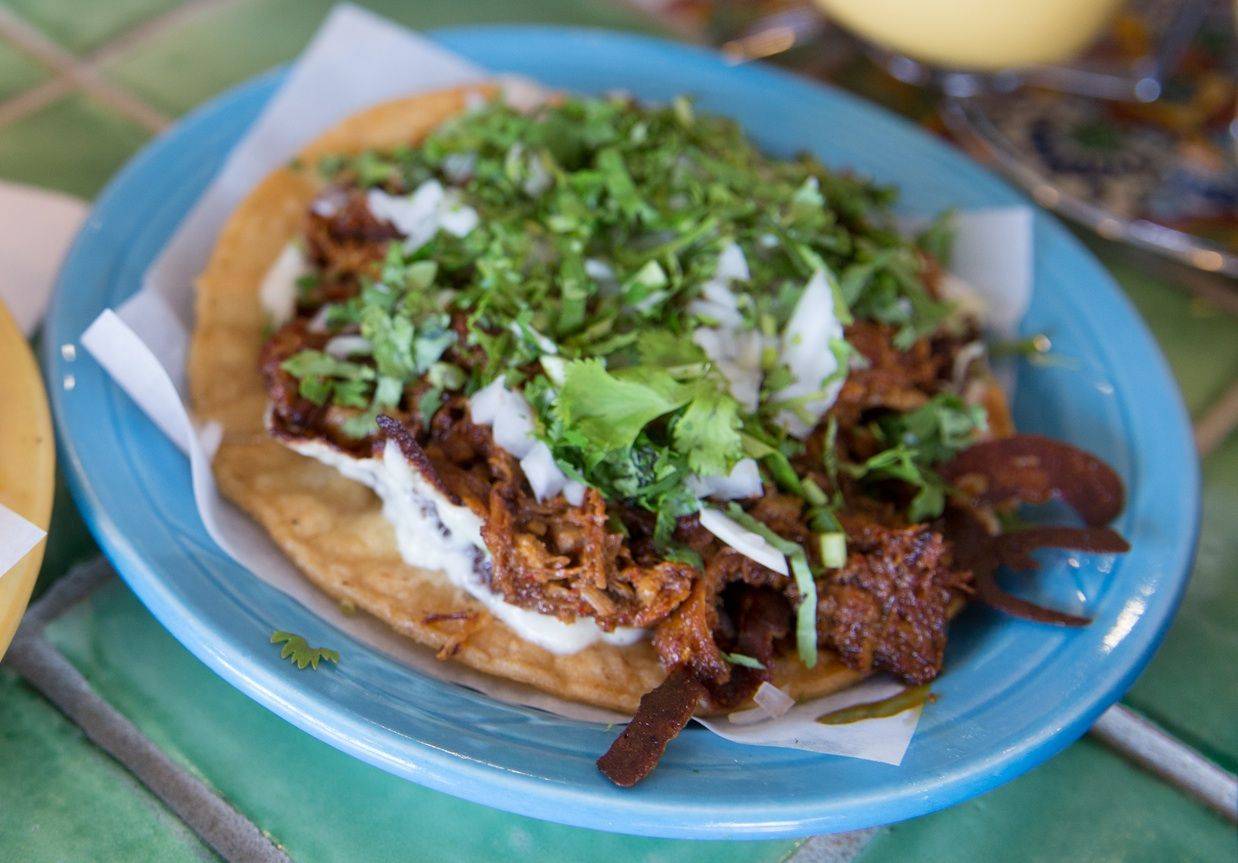There’s no contest—Maize serves, hands down, the best Mexican food in town. It’s fresh, flavorful, and perfectly simple. The restaurant’s first location, 60 East Green Street in Champaign, is an incredibly small, 10-12 seat joint with limited parking. The location has housed several different restaurants in the past, and when founder and owner Armando Sandoval selected the location, he was worried that it would be where his restaurant, too, went to die. Fortunately, this is certainly not what happened. Within two weeks of its opening, the line for Maize was continuously out the door. People seemed berserk over this place—with one taste, you’ll understand. A year and a half after opening the doors at the Green Street location, Sandoval has opened will open another Maize location in yet another historically doomed spot, 116 North Chestnut Street in Champaign. This location has been home to several restaurants in the past, but all have since permanently closed their doors.
Why would a small, affordable restaurant in serious demand choose to open another restaurant in another plagued location? Sandoval laughs at this question, not out of hi- larity or dismissal, but out of questioning and, perhaps, a bit of anxiety. He states, “The reviews that are out there usually say that ‘the food is great, but the location…,’ and of course when we opened we never expected the reception to be that strong and that great. It took us by surprise.” Now that Sandoval and his team have their footing in the Green Street location, he wants to be able to provide proper accessibility and seating to his patrons. The Chestnut Street location will allow for not only proper table seating, but also handicap accessibility.
 Armando Sandoval was born in Mexico City, Mexico. He grew up on his grandparents’ farm in a small town of Guerrero, toward the west coast, in the state of Acapulco. When Armando speaks of his youth, you know that his childhood memories of food and fam- ily are at the very core of what he does in Champaign. He worked on the land with his grandfather, and watched and learned cooking from his grandmother and his mother. His motivation and inspiration come from his grandmother and his experiences growing up on the farm. His grandmother made everything by hand and with ingredients available on the farm, right outside the door. These are the ingredients he carries with him and incorporates into his own cooking and the Maize menu. He fondly recalls picking pumpkin flowers for his quesadillas: “My grandmother would say, ‘You want a quesadilla? Go outside and pick some flowers.’ The flowers were literally right outside the house. We’d pick them, rinse them, and put them in the quesadilla.”
Armando Sandoval was born in Mexico City, Mexico. He grew up on his grandparents’ farm in a small town of Guerrero, toward the west coast, in the state of Acapulco. When Armando speaks of his youth, you know that his childhood memories of food and fam- ily are at the very core of what he does in Champaign. He worked on the land with his grandfather, and watched and learned cooking from his grandmother and his mother. His motivation and inspiration come from his grandmother and his experiences growing up on the farm. His grandmother made everything by hand and with ingredients available on the farm, right outside the door. These are the ingredients he carries with him and incorporates into his own cooking and the Maize menu. He fondly recalls picking pumpkin flowers for his quesadillas: “My grandmother would say, ‘You want a quesadilla? Go outside and pick some flowers.’ The flowers were literally right outside the house. We’d pick them, rinse them, and put them in the quesadilla.”
His grandmother visited right before the opening of the Green Street location, insist- ing that she help in the restaurant. She’s glad that she was able to contribute in some way. She still lives on her farm and continues to work, caring for the animals, mak- ing cheese. This fresh, real, and farm-to-table cooking is what he strives for at Maize. “People are very smart about their food here,” Sandoval states. “They care about their food.” In responding to his customer base, he is always looking for ways to bring in local ingredients, which has been challenging in the small Green Street location thus far. He sources his pumpkin flowers from a farmer in Peoria, and hopes to be able to provide more organic ingredients from local farms in the new space.
However, Sandoval will be the first to tell you that Maize isn’t necessarily authentic Mexican food. For him, authentic Mexican food is a feeling, nostalgia. An authentic Mexican taco is one that comes from a cart on the street in Mexico City, with the whirr of traffic in the background. Maize is authentic in that Sandoval and his crew offer up foods you’d find in Mexico City, with an emphasis on special ingredients overlooked by many other local Mexican restaurants. He’s found a way of bridging traditional Mexi- can food with Central Illinois ingredients. Pumpkin flower quesadillas and huitlacoche—corn smut, in English—are two menu items you’ll not find anywhere else in town. These items are common in Mexican cooking. It’s been called a Mexican truffle, and can be used in the place of mushrooms. “In Chicago, people don’t know what corn smut is,” Sandoval explains, “[but here] I was amazed that people recognized it. I also heard that a lot of farmers throw it away.” Huitlacoche, however, is considered a delicacy, and is available in several menu items at Maize.

Seasonal, local ingredients will dictate a changing menu in the front dining room (set to open in the fall, after the back dining room this summer). The bar is huge and will provide a wonderful platform at which patrons can meet other folks and come together as community members united by delicious food. Sandoval doesn’t see the point in reinventing traditional Mexican recipes, but prefers to tap into the sentiment and the feeling he has about the foods he grew up eating and recreate those foods for his customers.
Creativeness comes in the everyday. Sandoval finds pleasure in cooking for his fiancée and in discovering ways to please her palette. She’s a vegetarian, so if he can make food that works for both meat eaters and vegetarians, he knows it will work in the restaurant. He notes that she is his greatest motivation and, after meeting her, I can say also his biggest champion.
For the new restaurant, Sandoval is not interested in providing pages and pages of menu items—he wants to keep it simple. There are a small number of selections that are all incredibly well done. Moreover, by including dishes that are gluten-free and vegetarian, Sandoval is, in a sense, curating an experience wherein he’s providing incredibly well done options for each eater.

Accessibility is a theme that runs through Sandoval’s vision. The intersections of different types of people—professors, professionals, students, folks from Champaign- Urbana—are essential to the success of Maize. Keeping the prices reasonable is also important; anyone can come into the restaurant and order an item or two. People don’t need a large, high-priced entrée, necessarily. He states, “I don’t want to alienate anyone. Anyone who wants to stop by the restaurant and try our food can, because for me, working in the restaurant is like sharing my culture with a lot of people.” The Chestnut Street location is on the cusp of downtown Champaign, but remains accessible to people who aren’t interested in dining in downtown Champaign.
The new location will have parking in the back. The kitchen space is huge—there will be plenty of space for food prep, dishwashing, and expediting. The large patio space is really lovely; the hum of traffic is a welcome backdrop to the warmth of a great meal with family and friends. The entire building will be lit up with accent lights on the exte- rior, further cocooning this highly coveted space. I anticipate patio seating being hard to come by. Sandoval also hopes to have some music on the patio, as there is a small stage area perfect for trios.
Maize embodies the “micro-urbanness” that is C-U. There’s the big city, hustle and bustle feeling in the crowded, small Green Street location. The food is great, and part of the experience is making small talk with others as you wait for your order to be filled. On the other hand, when that aesthetic becomes too much, you can just call your order in, pick up, and take it home. In the new location, you’re able to still get that great food, but at a social pacing that is more comfortable to people who don’t like the micro or the urban. The staff’s friendliness, patience, and generally pleasant disposition remind you that you’re in a small town where people seem to genuinely care about their fellow community members.

Sometimes having a good meal is less about the food you’re ingesting and more about the company with whom you’re socializing. The memories of a great night out with friends may not include the incredible dinner you shared, because the great food was unquestioned. The food simply becomes the platform from which you can have that wonderful night out with your partner or group of friends.
The new location’s patio space will be, perhaps, the best area for these interactions to happen. Tables might be a little closer; it might be a little louder; and as a patron, you might be looking around, taking in the sights and sounds of the downtown area. You may also be more likely to lock eyes with a fellow diner and acknowledge the delicious- ness of your food, the refreshing qualities of your margarita, or the appropriateness of the trio playing some music.

When all of these things are done right—food, atmosphere, music, drinks—you don’t notice them, really. You relish in the pleasure you’re experiencing from those elements and your company. Maize’s new location has the potential to really grasp these things and run with it.
There is an additional space in the building available for lease, and Sandoval already has his sights set on taking on that space in the future; he hopes to be able to experi- ment with different corns and tortillas. For now, though, he’ll focus on bringing the great food, great attitude, and approachability of Maize a little closer to downtown Champaign.
Sandoval cooks to please people. When they have a good experience, he wants to replicate it. It’s a challenge he accepts with enthusiasm. For him, Maize is about love of food and sharing that with people. Like so many others in the area, he came to C-U to study, first at Parkland College, then at the University of Illinois. His course of study? Sociology. After talking with Sandoval, this seems to be most natural and obvious—he’s interested in people, after all.
Photos by Justine Bursoni.
This story was originally published in Bonfire, the print companion to Smile Politely. The Autumn/Winter 2013 edition was published and distributed around Champaign-Urbana at the end of August 2013. Over the next several months, we will publish the stories featured in Bonfire on Smile Politely.








